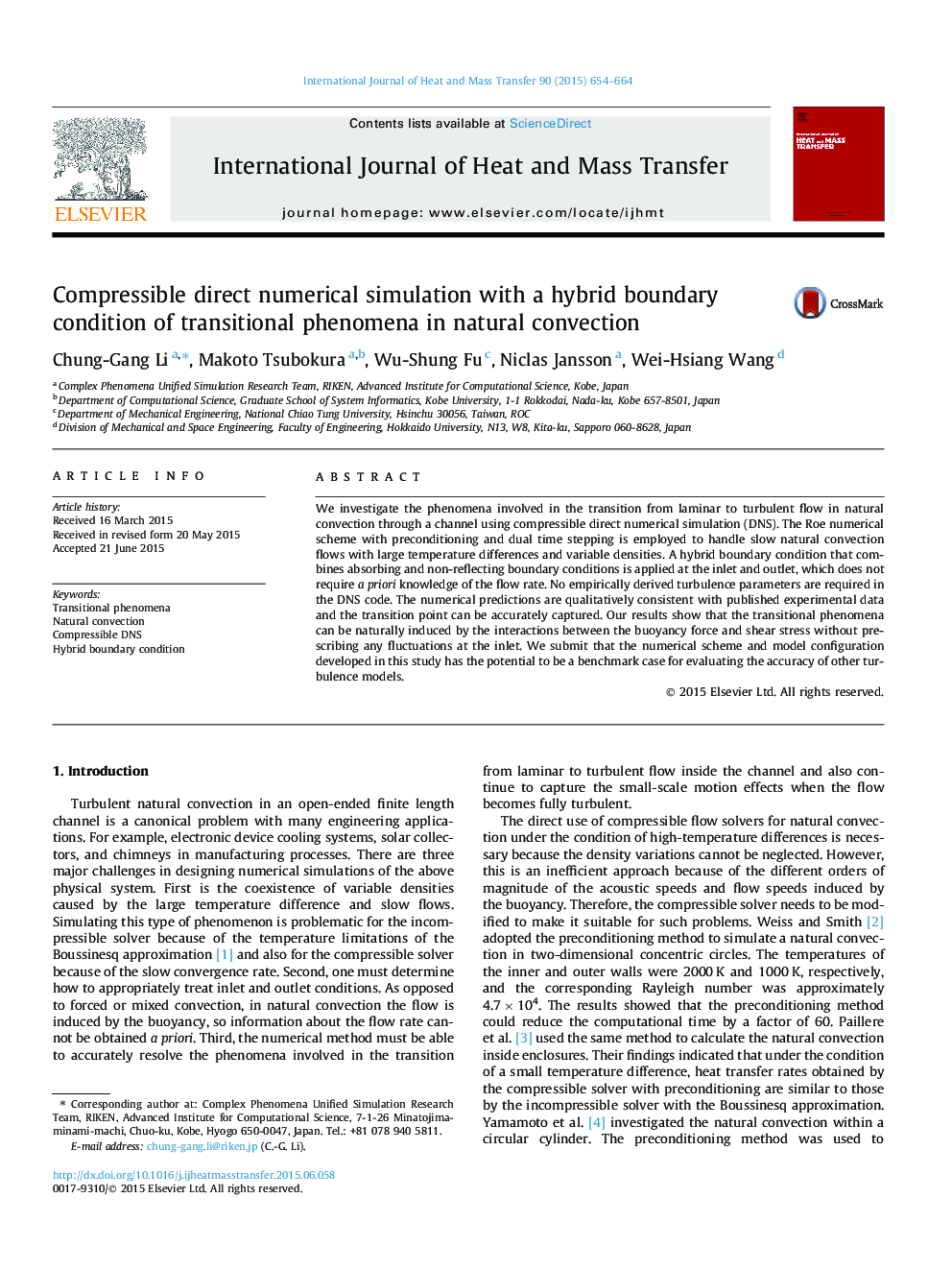| Article ID | Journal | Published Year | Pages | File Type |
|---|---|---|---|---|
| 7056520 | International Journal of Heat and Mass Transfer | 2015 | 11 Pages |
Abstract
We investigate the phenomena involved in the transition from laminar to turbulent flow in natural convection through a channel using compressible direct numerical simulation (DNS). The Roe numerical scheme with preconditioning and dual time stepping is employed to handle slow natural convection flows with large temperature differences and variable densities. A hybrid boundary condition that combines absorbing and non-reflecting boundary conditions is applied at the inlet and outlet, which does not require a priori knowledge of the flow rate. No empirically derived turbulence parameters are required in the DNS code. The numerical predictions are qualitatively consistent with published experimental data and the transition point can be accurately captured. Our results show that the transitional phenomena can be naturally induced by the interactions between the buoyancy force and shear stress without prescribing any fluctuations at the inlet. We submit that the numerical scheme and model configuration developed in this study has the potential to be a benchmark case for evaluating the accuracy of other turbulence models.
Keywords
Related Topics
Physical Sciences and Engineering
Chemical Engineering
Fluid Flow and Transfer Processes
Authors
Chung-Gang Li, Makoto Tsubokura, Wu-Shung Fu, Niclas Jansson, Wei-Hsiang Wang,
